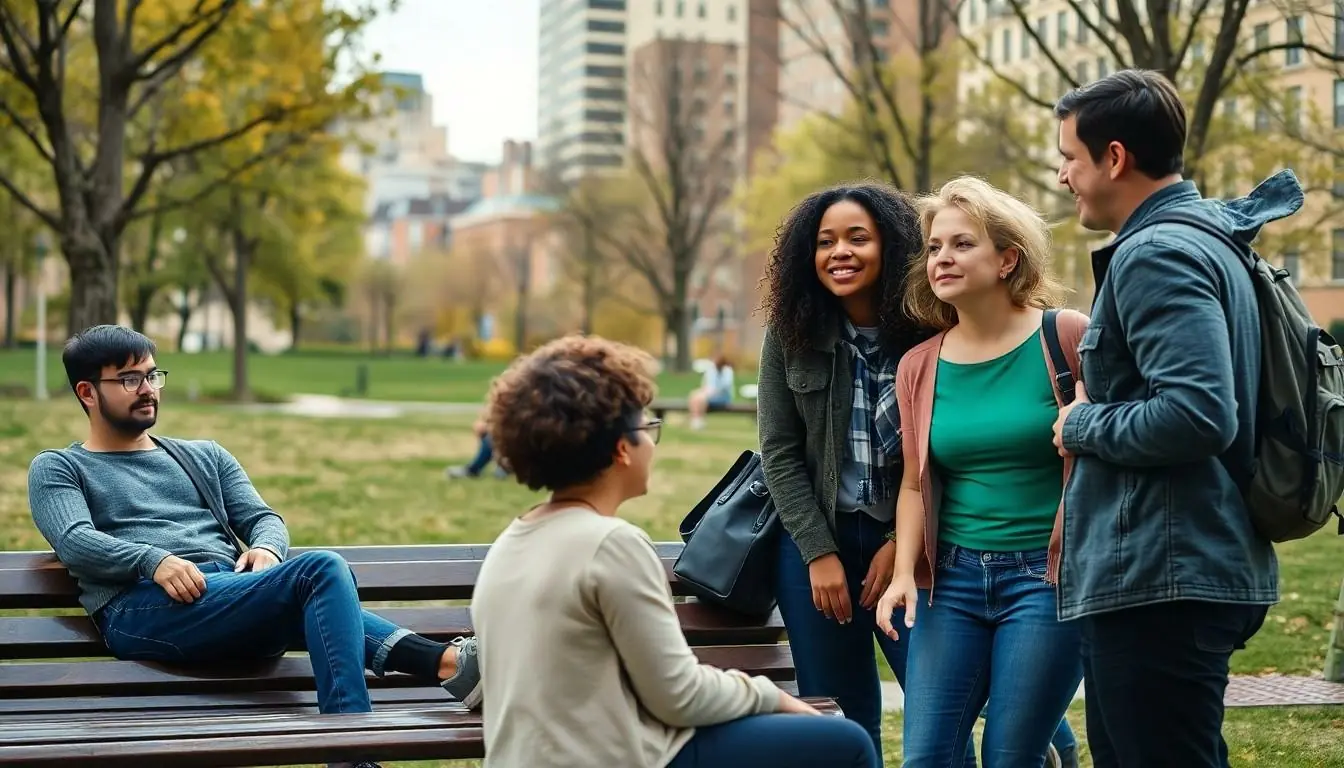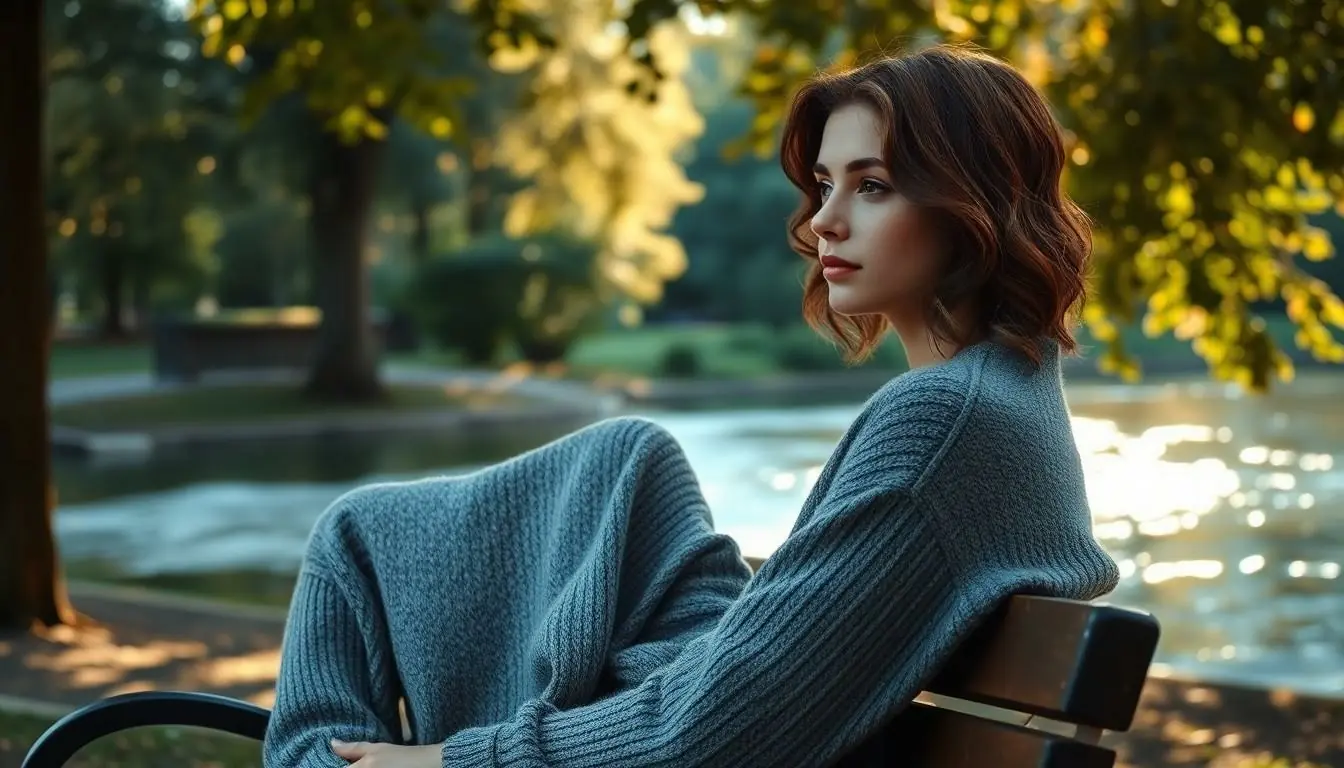In a world where selfies reign supreme and filters can make anyone look like a supermodel, mental health photography emerges as a refreshing antidote. It’s not just about capturing a pretty face; it’s about revealing the raw, unfiltered emotions that come with mental health struggles. This art form invites viewers to connect on a deeper level, breaking the stigma surrounding mental health one snapshot at a time.
Imagine flipping through a gallery filled with images that resonate with the chaos of anxiety or the serenity of self-acceptance. These powerful visuals tell stories that words often fail to convey. Mental health photography isn’t just a trend; it’s a movement that encourages vulnerability, authenticity, and understanding. So grab your camera and let’s explore how this unique blend of art and mental wellness can spark conversations and inspire change.
Table of Contents
ToggleUnderstanding Mental Health Photography
Mental health photography emphasizes capturing authentic emotions tied to mental health challenges. This artistic approach reveals the inner experiences of individuals rather than merely showcasing their external appearances. Photographers use their craft to document personal stories, highlighting struggles and triumphs through visual narratives.
Artistic expression provides a unique lens into the complexities of mental health. It facilitates discussions about often-stigmatized topics, promoting understanding and empathy among viewers. Evocative images can resonate deeply, evoking feelings that verbal communication may not convey.
Photographers often focus on themes like isolation, resilience, and recovery. They create imagery that invites viewers into the emotional landscapes of individuals dealing with mental health issues. Through this connection, the audience gains insight into the lived experiences of others.
Understanding this form of photography also involves recognizing its role in advocacy. Mental health photography can challenge societal perceptions, urging individuals to confront their biases. By fostering vulnerability, it encourages people to share their stories and experiences, further breaking down barriers.
Community plays a vital role in this movement. Many photographers collaborate with mental health organizations or survivors to amplify voices that often go unheard. Such partnerships nurture a supportive environment, allowing creative expression to flourish alongside critical awareness.
Mental health photography serves as a bridge, linking artistic expression to essential conversations about mental wellness. Engaging with this movement inspires individuals to reflect on their own experiences and the journeys of others.
The Importance of Visual Storytelling

Visual storytelling significantly enhances mental health awareness. Through powerful imagery, it conveys complex emotions and experiences that resonate deeply with viewers.
The Role of Imagery in Mental Health Awareness
Imagery plays a crucial role in breaking mental health stigma. Visual representation facilitates a deeper understanding of diverse mental health experiences. Photographs can evoke feelings of empathy, prompting discussions about mental health challenges. Documentation of real-life struggles invites reflection and connection among viewers, reinforcing the importance of openness. Use of striking visuals encourages audiences to confront their biases, fostering a more informed society.
Capturing Authentic Emotions
Authentic emotions form the heart of mental health photography. Capturing genuine feelings allows photographers to depict the realities of mental health struggles. Strong visual narratives showcase experiences of isolation and recovery, helping individuals feel seen. Emotionally charged images speak volumes, often expressing what words cannot communicate. This form of artistic expression nurtures honest conversations, empowering viewers to share their own stories and experiences.
Techniques in Mental Health Photography
Mental health photography employs various techniques to convey authentic emotions and experiences. These methods deepen the connection between the artwork and viewer.
Composition and Framing
Effective composition and framing highlight personal narratives. Creating balanced images draws attention to the subject’s emotional state, allowing viewers to engage with the story. Utilizing negative space can emphasize feelings of isolation or distress, while tighter framing captures intimate moments of vulnerability. Photographers frequently experiment with angles to stir emotional responses, providing a fresh perspective that resonates with audiences. Each captured image tells a tale, immersing viewers into the complexities of mental health struggles.
Use of Color and Lighting
Color and lighting significantly impact the mood of mental health photography. Warm tones like reds and yellows can evoke feelings of comfort and hope, while cool tones like blues and greens might communicate sadness or tranquility. Photographers often manipulate natural light to enhance the emotional depth of a scene. Low lighting can create an atmosphere of introspection, while bright areas highlight themes of hope and resilience. By thoughtfully combining color palettes with lighting choices, photographers craft visually engaging pieces that resonate with viewers on an emotional level.
The Impact of Mental Health Photography on Society
Mental health photography profoundly influences society by challenging perceptions and fostering understanding. This art form serves as a transformative medium, conveying complex emotions associated with mental health experiences.
Breaking Stigmas Through Art
Art breaks barriers, allowing individuals to share authentic narratives without pretense. Mental health photography invites viewers to confront societal biases about mental health. Photographers capture raw emotions, revealing the realities of struggles often hidden behind smiles. Each image sparks conversation, compelling audiences to reconsider preconceived notions. By showcasing vulnerability, mental health photography dismantles stigma, creating pathways for acceptance and inclusivity.
Inspiring Conversations Around Mental Health
Conversations around mental health gain momentum through evocative imagery. Photographs create emotional connections that resonate deeply, fostering open discussions. Viewers feel seen and heard, motivating them to share personal experiences. By shedding light on isolation and resilience, mental health photography promotes empathy among diverse audiences. Engaging with these visual stories inspires individuals to participate in dialogues about mental health, ultimately enriching community understanding.
Ethical Considerations in Mental Health Photography
Mental health photography requires attention to ethical standards that respect subjects and their experiences. Photographers navigate sensitive issues with care, ensuring responsible practices in their work.
Consent and Representation
Obtaining informed consent is crucial in mental health photography. Artists communicate clearly with their subjects about how images will be used. Open discussions foster trust, enabling individuals to share their stories authentically. Representation matters as well; diverse voices and experiences should be reflected in the imagery. Inclusive representation helps challenge stereotypes, allowing for a broader understanding of mental health struggles across different backgrounds.
Avoiding Exploitation of Vulnerable Subjects
Exploitation of vulnerable subjects must be avoided at all costs. Photographers should prioritize the dignity and well-being of individuals depicted in their work. They recognize that mental health challenges often involve deeply personal experiences. Ethical practices involve portraying struggles respectfully rather than sensationalizing them. Moreover, a commitment to advocacy includes advocating for those who may feel silenced, ensuring their stories contribute positively to the mental health dialogue.
Mental health photography stands as a vital medium that bridges the gap between art and advocacy. By capturing authentic emotions and personal narratives, it invites viewers into the often-hidden struggles of mental health. This art form not only fosters empathy but also encourages open dialogue, challenging societal perceptions and stigma.
Through thoughtful composition and emotional storytelling, photographers highlight the complexities of mental health experiences. The impact of this visual storytelling resonates deeply, inspiring individuals to reflect on their own journeys and those of others. As mental health photography continues to evolve, its role in promoting understanding and acceptance in society remains crucial.



